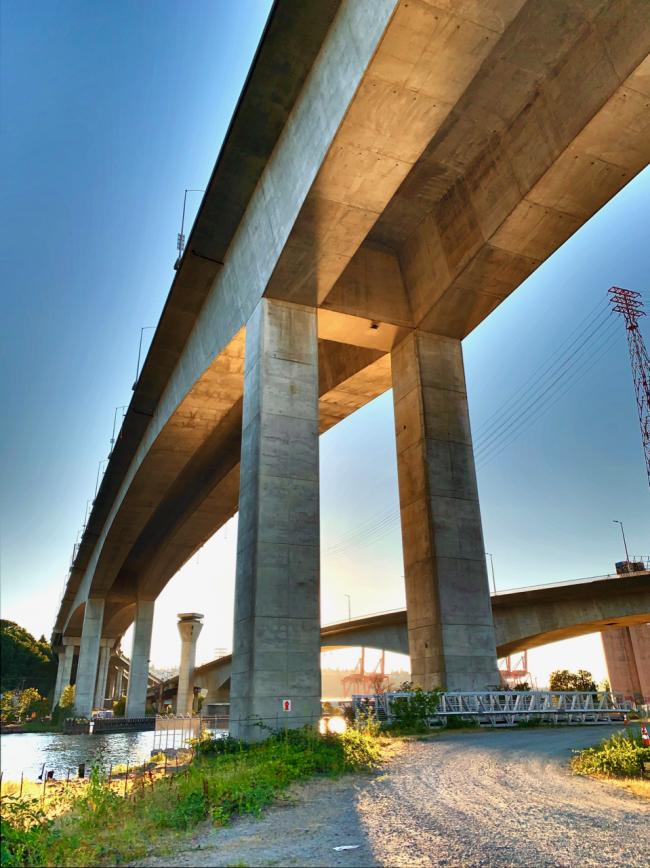Budget set at estimated $175 million for both West Seattle Bridge updates; Reopening still aiming at June 2022
Both West Seattle Bridges are set to be completely rehabilitated, strengthened and ready for the future by mid summer 2022 at a total program cost of $175 million according to Seattle Department of Transportation.
Photo by Patrick Robinson
Wed, 03/10/2021
The budget has been set for the complete rehabilitation of both West Seattle Bridges.
The total program cost is $175 million which includes high and low bridge work, the Reconnect West Seattle traffic mitigation funding, phase 1 rehabilitation and program management. Broken out the High Rise bridge will cost $58 million and the low bridge fix will come in at $14 million. The RFQ calls for $48 million.
- $48m is the estimated maximum allowable construction costs for both the high and low bridges. That’s the maximum amount SDOT anticipates paying the contractor for construction materials and labor (i.e. the hard costs for both bridges).
- $58 million is the preliminary design estimate for all rehabilitation work on the high bridge only. That includes hard costs as well as normal contingencies for potential risks and soft costs like project management, contract administration, outreach and public communications. (i.e.both hard and soft costs, but only for the high bridge).
The $103 million remaining has already gone to the first phases of stabilization and repair plus concept costs paid to contractors for options and studies. It also includes certain related costs, such as new traffic signals through Highland Park, asphalt road repairs, speed-display signage, communications costs such as neighborhood outreach, and likely supplemental transit costs.
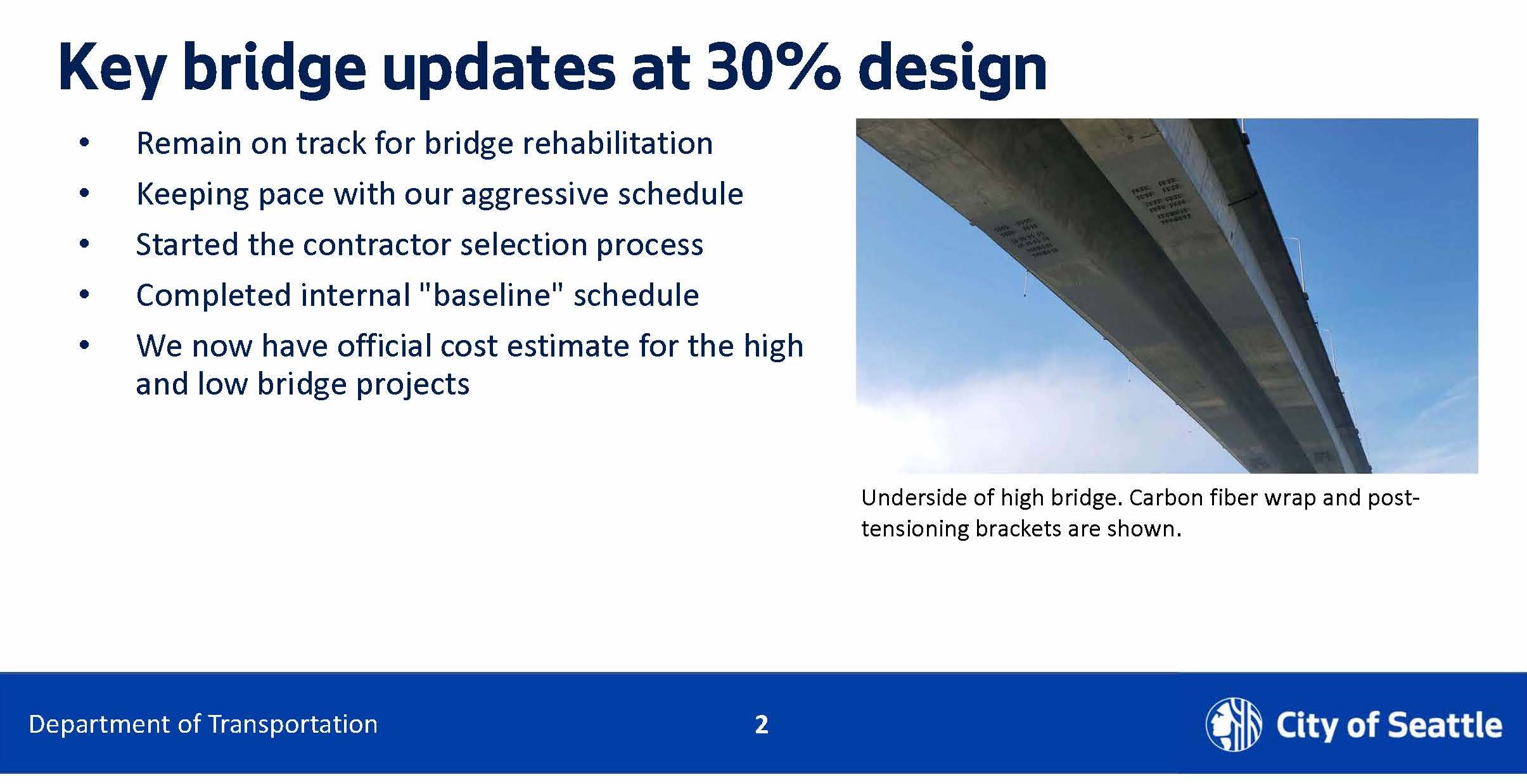
SDOT published a Request for Qualifications in the Daily Journal of Commerce to recruit a contractor for the remaining work.
The stabilization and repair work done thus far is at the 30% level said SDOT.
Traffic for the High Rise bridge is expected to return around June of 2022. When it does, it will be a gradual opening to allow engineers to look at how the bridge performs under load and so adjustments if necessary can be made, before opening the bridge to full capacity.
The preliminary design for the rehab is using proven construction methods and while the contractor chosen will provide more specifics and timing the basics are that new carbon fiber wrap will be applied to the central and end spans. More post tensioned steel is being added throughout the bridge and they also plan to do some ground stabilization work near Pier 18 (though it's not required prior to re-opening). That work will mean injecting a slurry of cement into the alluvial till soil around the base of the bridge support on the east side of the bridge where the bearing had previously failed. They said they would also take a look at the westside at Pier 15.
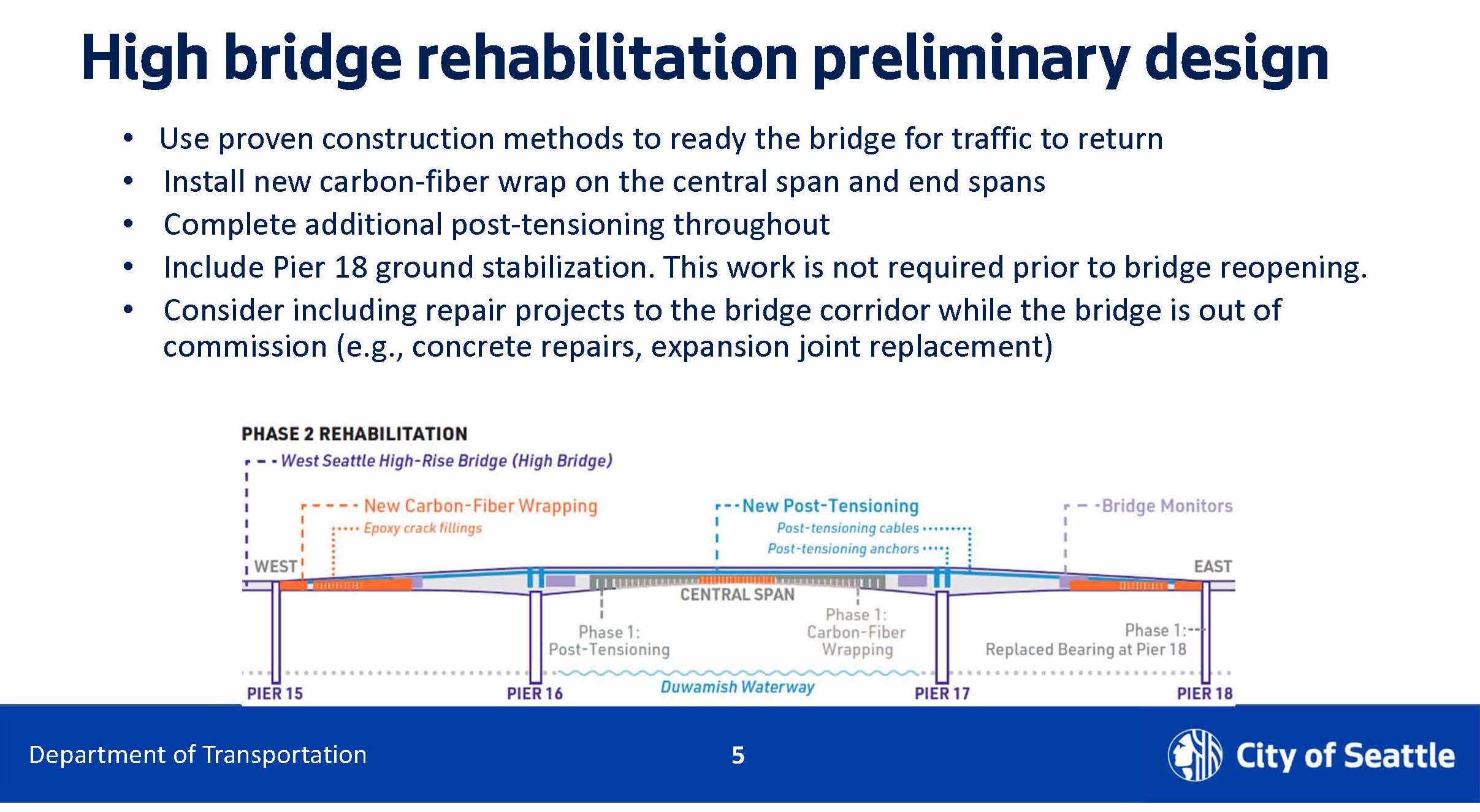
The low bridge meanwhile is getting what SDOT said is a "Proactive approach" to both strengthen and monitor it while the high bridge is closed. Cracks of a similar type were found during inspections last year and while forecasts from the Port of Seattle following the Terminal 5 are looking at a potential doubling of heavy truck traffic, they say the repairs are designed to accommodate it. Those include filling the cracks with epoxy resin (this prevents moisture from reaching post tensioned steel components inside, plus more carbon fiber wrapping.
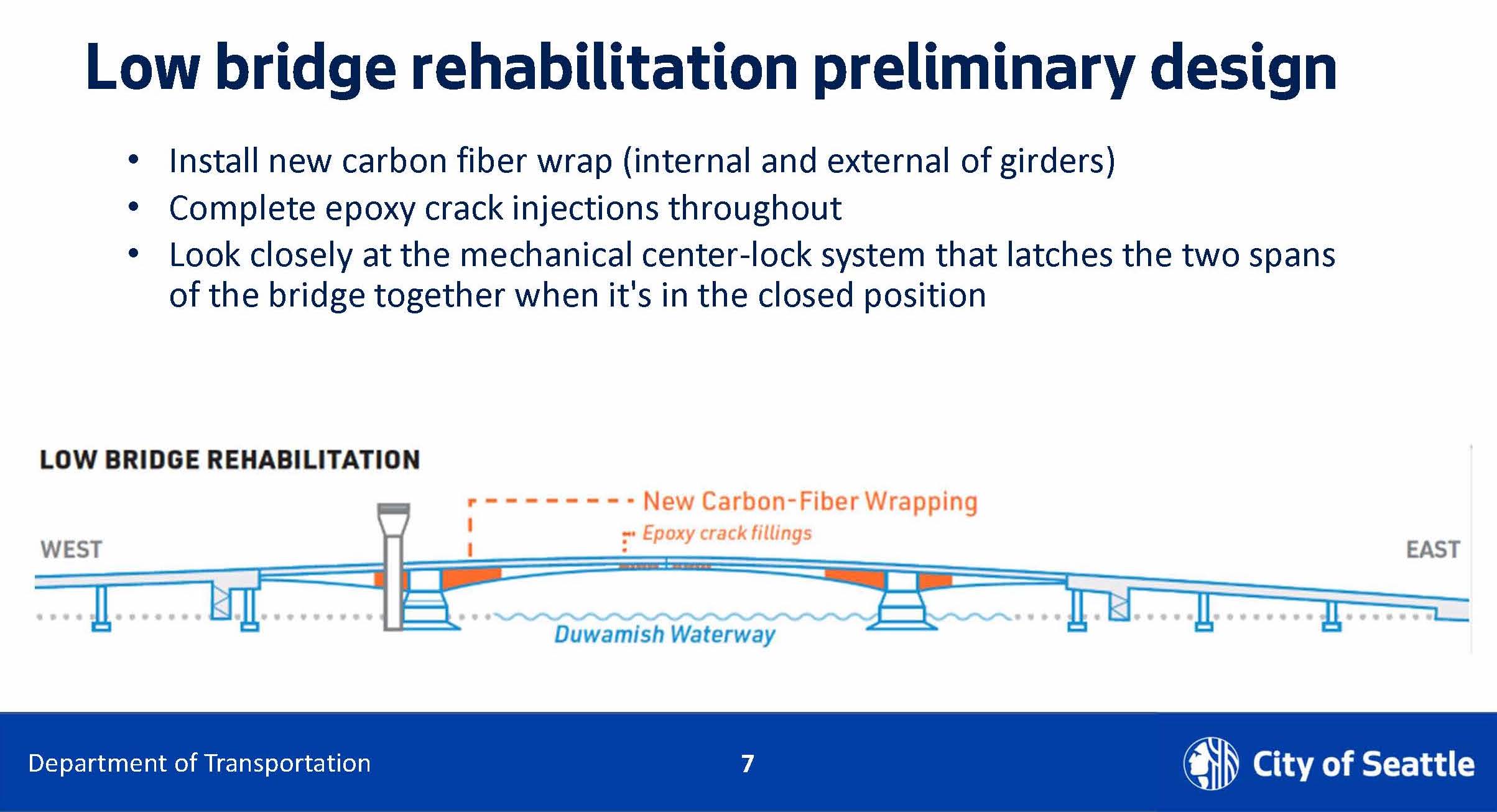
The contractor is expected to be selected in the next 33 days (by April 12) using the General Contractor/Construction Management approach. and will start this summer as they work on the rehab design. The GCCM method provides better schedule predictability SDOT said.
Further updates on the process are expected this summer. The process for the low bridge is expected to be completed by Q3 of 2022.
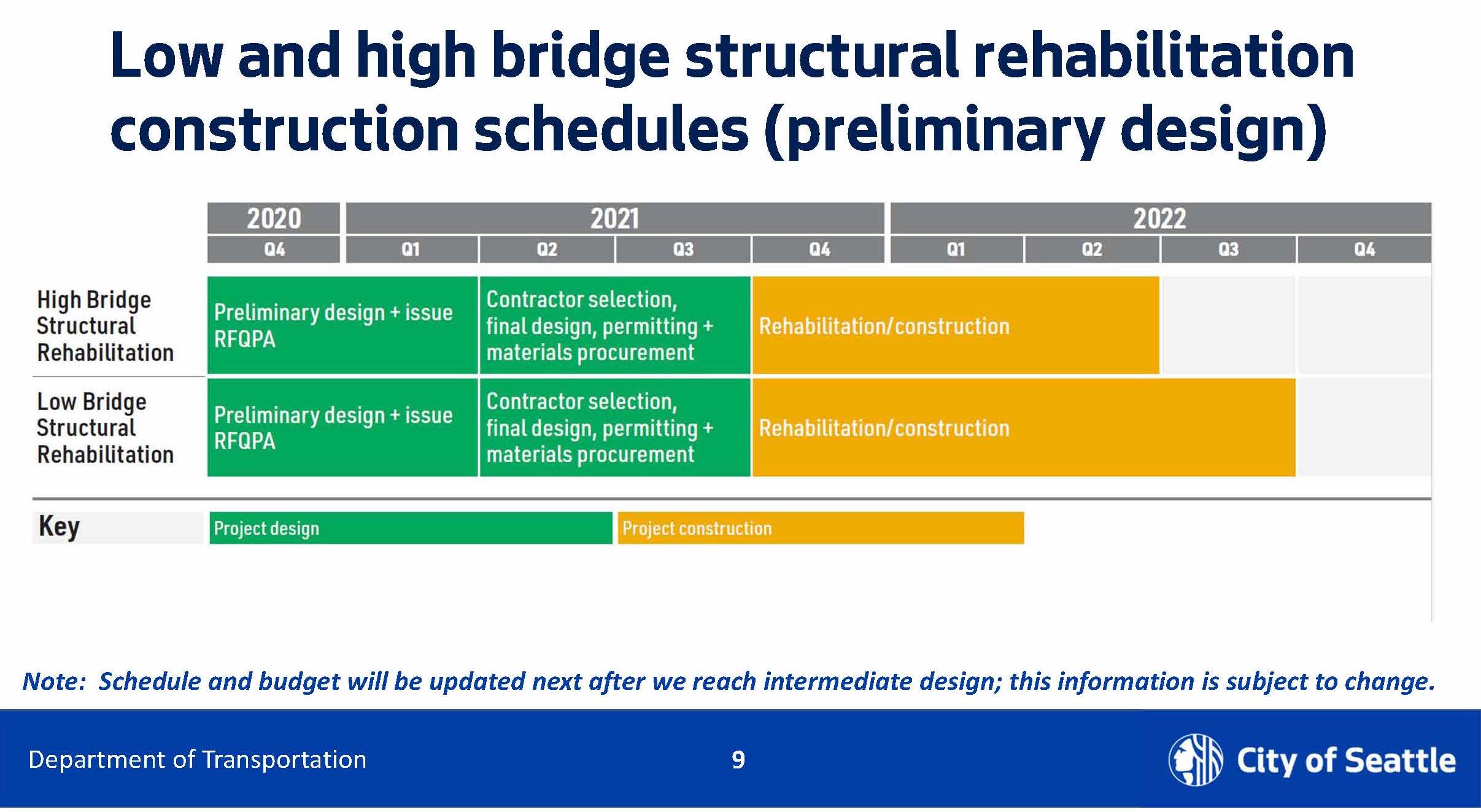
The process is expected to include investments the surrounding communities in terms of both street safety and contracting provisions. One stated goal is to hire from economically distressed zip codes as they seek approval from the US Department of Transportation. SDOT will also seek a Disadvantaged Business Enterprise goal established later in design by WSDOT.

